15+ People Who Dared to Leave Their Corporate Job Behind and Start a New Life

You’re walking home quite late at night. It’s been raining, and now, the air is fresh and damp. And that’s when you see it — a rainbow! But it’s nighttime! Is it even real?
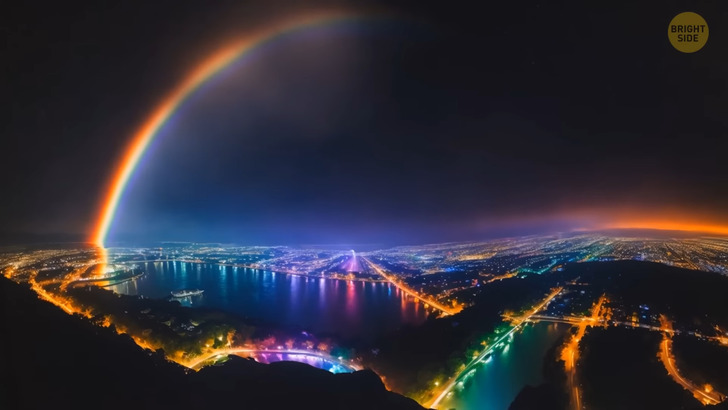
Well, it is — because it’s a lunar rainbow, also known as a moonbow. Moonbows are as cool as they are rare. They occur when the light gets refracted through water droplets in the air, just like it happens when a normal rainbow forms. But the source of light, in this case, is different. I’m sure you’ve already guessed that it’s the Moon. Or rather, sunlight reflected off the Moon. Since moonbows are produced at night, when there’s much less light, they’re a lot more difficult to spot. Often, a moonbow looks like a pale white ring. That’s because the light is normally so faint that the cone color receptors in human eyes can’t detect the hues. Also, experts claim that how bright the colors are depends on the size of water droplets in the air. The smaller they are, the less vivid the colors. If you want to witness a moonbow, opt for a night when the Moon is at its fullest, for example, during a full Moon phase. The Moon also has to be low in the sky and not obscured by clouds. In the US, you can see moonbows next to waterfalls, including Niagara Falls, as well as Yosemite National Park and other places.
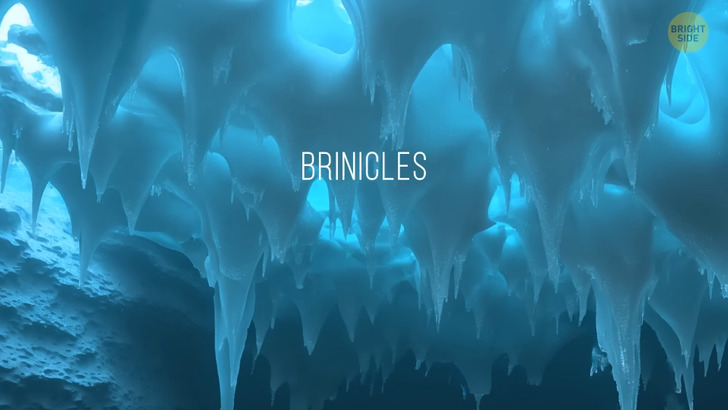
But you can see mesmerizing natural phenomena not only at night after the rain. For example, look at these brinicles! They are hollow icicles, also known as underwater stalactites. They form when cold salt water freezes in the right conditions. Then brinicles can reach the ocean floor and start pulling there. They can even freeze some slow-moving underwater inhabitants, like starfish!
This next phenomenon is even more dangerous than brinicles! Sinkholes occur when water that has turned acidic after coming into contact with plants or carbon dioxide erodes soft kinds of rock, like gypsum or limestone. This forms a deep underground cavern that can one day open anywhere — even under your house. One such sinkhole opened up in New York City. It pulled a parked van into the earth. It happened in the summer of 2022. And it wasn’t the only sinkhole to appear in that area. Local inhabitants reported around 4,000 sinkholes all over the city. This kind of problem is also very common in Florida. And it’s much more serious than it may sound. Sinkholes open all of a sudden, pulling down everything and everyone that happens to be nearby. Sinkholes appear all over the world, which makes them a global problem. They’re totally unpredictable and form without warning. Another reason for their formation might be vast areas of groundwater. During droughts, this water dries up. This creates large empty caverns. After heavy rains, the surface over such a cavern can collapse, creating a sinkhole within minutes.
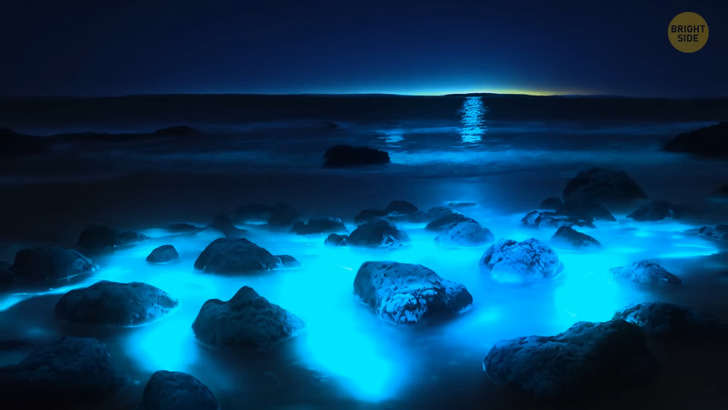
This phenomenon is much more beautiful and way less dangerous than sinkholes. Just look at this beach! Is it... glowing?! Your eyes aren’t deceiving you — you can see this phenomenon all over the world. It’s caused by phytoplankton in the water. It gives off light when the movements of waves and currents disturb it. This particular species of phytoplankton glows blue, turning the ocean into a gigantic lava lamp. At the same time, if you saw it during the day, you’d probably feel disgusted because the thick visible layer of the plankton near the surface of the water doesn’t look... well ... nice.
Waterspouts are also known as sea tornados. They occur over warm ocean waters. Waterspouts look like funnel-shaped clouds reaching down from the stormy skies. Most of them don’t pull in water — they’re rather weak rotating columns of air hovering above the surface of the water. Some waterspouts begin as dry land tornados. Then they travel toward a body of water and turn into severe thunderstorms with hail, high winds, and lightning.
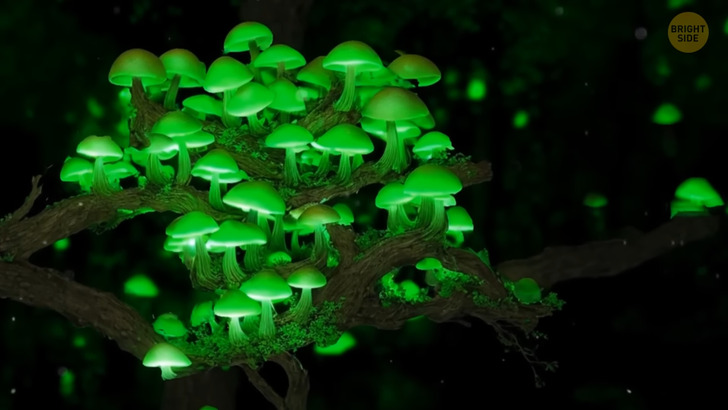
During the summer, in forests all over the world, you might see a faint eerie glow called “foxfire.” It might look mystical and a bit scary, but the nature of this glow is very simple. It’s produced by bioluminescent mushrooms growing on moist rotting bark. You can find lots of these mushrooms in the tropics, where damp forests encourage their growth. To increase your chances of seeing some of those magical fungi, hunt them in the forest during the wettest season. Plus, move as far away from artificial light sources as possible. Otherwise, you won’t be able to spot this faint glow. And if you find one — nope! Don’t do that! They’re not THAT kind of mushroom!
Fire rainbows are another phenomenon that occurs in the summer. They appear when sunlight interacts with frozen ice crystals in high-altitude clouds. Interestingly, for a fire rainbow to appear, you don’t need any rain. That’s why scientists prefer to refer to this beautiful natural phenomenon by its official name: the circumhorizontal arc. This arc occurs when the sun is very high in the sky, and there’s one special variety of clouds. That’s why you’re more likely to see fire rainbows closer to the equator. In other words, if you’re in Los Angeles, you can spot them for six months out of the year, while in more northern cities, like London, this window is merely 2 months.
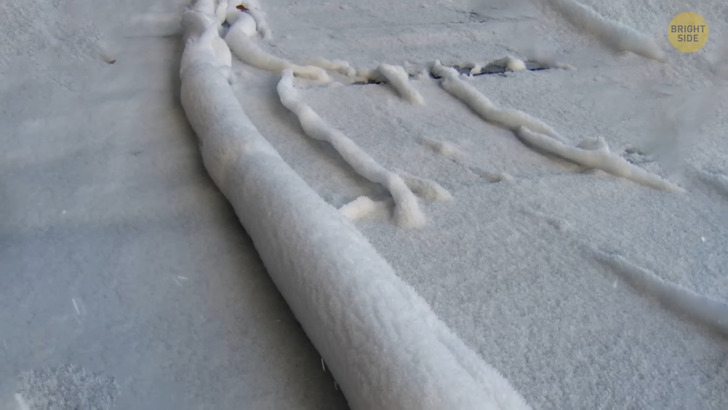
Look at this cute roll — it looks handmade. But it’s actually a natural phenomenon called the snow roller. Snow rollers are formed when there’s a thick layer of fresh snow that covers a layer of ice. When the temperature and wind speed are just right, some snow breaks loose and starts rolling. While rolling, it picks up additional snow and ends up as a large snow donut. The conditions creating these “pastries” must be very precise — that’s why they’re quite rare.
Have you ever climbed the stairs of the Giant’s Causeway in Ireland? They sure look as if they were created by people. But in fact, this absolutely awesome formation is natural and has a scientific name — columnar basalt. These mostly hexagonal columns have a volcanic origin — they appear when lava cools very fast, contracting and creating various cracks in the surface of the new rock.
Now, look at the sky — fast! This phenomenon is extremely rare, so you’d be very lucky to witness it. These clouds are called asperatus, and they managed to avoid being classified until 2009. They seem to be ominous and stormy. But in most cases, they break up very quickly without producing a storm — blink, and you’ll miss them. These clouds get formed when colliding air masses or turbulent winds whip up the bottoms of cloud layers, creating amazing shapes.
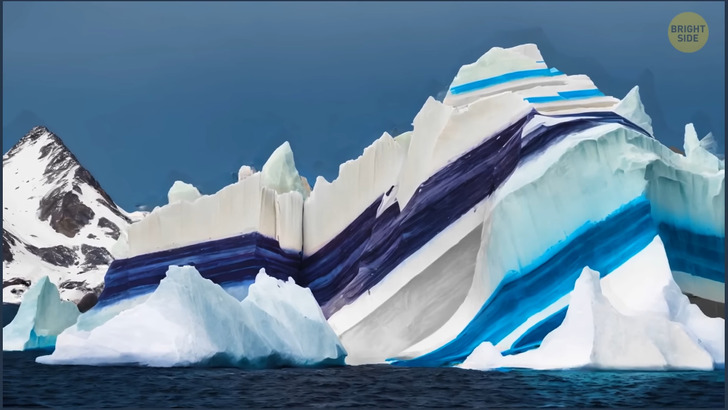
Now, put on your winter jacket — we’re heading to the north to look at very unusual icebergs. The thing is, not all of these formations are monochrome. Some of them have different colored stripes, which stand out starkly against the whites and blues of the Arctic. The process of the formation of these stripes is quite simple — see for yourself. Water melts and freezes on an iceberg, with dirt and particles of different minerals getting trapped on its surface. They create multicolored stripes with a variety of colors. As for these blue stripes, they appear when water gets trapped between two layers of ice and freezes so fast that air bubbles don’t have enough time to form. And if an iceberg breaks off and falls into the ocean, algae present in the water might create yellow or green stripes.
If a storm holds back your long-awaited picnic, keep calm and think about how lucky you are that it’s not the Catatumbo — the world’s longest lightning storm! The heart of the storm, which repeats every year, is over Lake Maracaibo in Venezuela. It towers way higher than your regular thunderstorm. This natural phenomenon occurs for a whopping 140 to 160 nights a year, lasts for 9 hours a day, and produces 16 to 40 lightning flashes per minute. You’ve probably heard how they say that lightning doesn’t strike twice in the same place. Well, the Catatumbo seems to not know about this rule. Or, at least, it doesn’t prevent storm clouds from gathering in the very same place, year after year.











